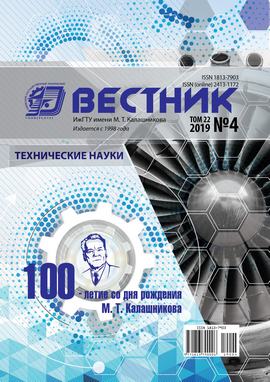ПРОБЛЕМЫ ОБЕСПЕЧЕНИЯ БЕЗОПАСНОЙ ЭКСПЛУАТАЦИИ ТЕЛЕЖЕК ГРУЗОВЫХ ВАГОНОВ ПРИ ОТРИЦАТЕЛЬНЫХ ТЕМПЕРАТУРАХ
DOI:
https://doi.org/10.22213/2413-1172-2019-4-18-26Ключевые слова:
пониженные температуры, хладноломкость, сталь, ударная вязкость, безопасная эксплуатацияАннотация
Представлена оценка хладостойкости стали 20ГЛ, которая широко применяется для изготовления ответственных конструкций (в частности, тележек грузовых вагонов), эксплуатирующихся при пониженных температурах.
Для решения поставленной задачи были проведены испытания на ударный изгиб исследуемых металлов в диапазоне температур климатического холода (–80…–20 оС) с последующим исследованием изломов металлов, проведена оценка структурного состояния стали, которая подвергалась термической обработке по режиму завода-изготовителя и термоциклической обработке (ТЦО).
Исследования проводились с использованием маятникового копра МК-300, специально разработанного для охлаждения образцов камеры, а также методов оптической (KEYENCE VHX-1000) и электронной микроскопии (JSM-3U), фрактографических исследований. В ходе исследования были получены данные по изменению ударной вязкости, механизмам разрушения металла для широкого диапазона низких температур, а также по температуре вязко-хрупкого перехода. Проведена операция ТЦО сплава 20ГЛ для оценки влияния измельчения зерна на работоспособность при отрицательных температурах.
В результате проведенной работы дана оценка хладостойкости стали 20ГЛ. Установлено, что термическая обработка завода-изготовителя, состоящая из нормализации и высокого отпуска, позволяет обеспечивать надежную эксплуатацию изделий из исследуемой стали до –20 оС, что соответствует температуре вязко-хрупкого перехода (Т50). Показано, что измельчение зерна при ТЦО не улучшает хладостойкость стали 20ГЛ, наоборот, происходит смещение температуры вязко-хрупкого перехода в сторону бόльших температур (Т50 = –13 оС). Однако результаты измерения микротвердости (до ТЦО 1591 МПа, после ТЦО 1911 МПа) показывают улучшение прочностных характеристик исследуемой стали после термоциклической обработки.Библиографические ссылки
Огневой В. Я. Работоспособность боковых рам тележек вагонов // Ползуновский альманах. 2008. № 5. С. 39–42.
Шульте Ю. А. Хладностойкие стали. М. : Металлургия, 1970. 300 c.
Корнев В. М. Охрупчивание материала стальных конструкций при низких температурах и катастрофическое разрушение // Физическая мезомеханика. 2018. Т. 21, № 2. С. 45–55. DOI: 10.24411/1683-805X-2018-12005.
Анализ хладостойкости металлов с различным типом кристаллического строения / Ю. Г. Кабалдин, А. А. Хлыбов, М. С. Аносов, Д. А. Шатагин, Д. А. Ря-бов // Вестник ИжГТУ имени М. Т. Калашникова. 2019. Т. 22, № 3. С. 48–55. DOI: 10.22213/2413-1172-2019-3-48-55.
Liu Zhu. Brittle Analysis of Steel Structure in Ex-tremely Cold Environment. Revista de la Facultad de Ingeniería U.C.V., 2017, vol. 32, no. 7, pp. 90-95.
Benac D.J., Shaffer D., Wood D. Managing Cold Temperature and Brittle Fracture Hazards in the Ammo-nia-Related Industries. AlChE 60th Annual Safety in the Ammonia Plants & Related Facilities Symposium (Au-gust 30 - September 3, 2015).
Горицкий В. М. Диагностика металлов. М. : Металлургиздат, 2004. 408 с.
Ларионов В. П., Семенов Я. С. Физические основы вязкохрупкого перехода низколегированных сталей и сплавов железа. Новосибирск : Наука, 1992. 171 с.
Огневой В. Я., Гурьев А. М., Огневая Г. Л. Термоциклическая обработка литых сталей для автосцепных устройств грузовых вагонов // Ползуновский альманах. 2008. № 3. С. 33–34.
Большаков А. М., Бурнашов А. В., Ефимов В. М. Мониторинг ударной вязкости материала магистрального газопровода, длительно эксплуатирующегося в условиях Севера // Заводская лаборатория. Диагностика материалов. 2019. № 6. С. 64–68.
О природе низкотемпературной хрупкости сталей с ОЦК-структурой / В. Е. Панин, Л. С. Деревягина, Н. М. Лемешев, А. В. Корзников, А. В. Панин, М. С. Казаченок // Физическая мезомеханика. 2013. Т. 16, № 6. С. 5–12.
Чернов В. М., Кардашев Б. К., Мороз К. А. Хладноломкость и разрушение металлов с разными кристаллическими решетками – дислокационные механизмы // Журнал технической физики. 2016. № 7. С. 57–64.
Финкель В. М. Физика разрушения. М. : Металлургия, 1970. 367 с.
Попова Л. Б., Ярцев В. П. Механика материалов при сложном напряженном состоянии. М. : Машиностроение-1, 2005. 244 с.
Конрад Х. Модель деформационного упрочнения для объяснения влияния величины зерна на напряжение течения материалов. Сверхмелкое зерно в металлах. М. : Металлургия, 1973. С. 206–219.
Физическое металловедение. Т.1. Атомное строение металлов и сплавов : пер. с англ. / под ред. Р. У. Кана и П. У. Хаазена. М. : Металлургия, 1987. 640 с.


